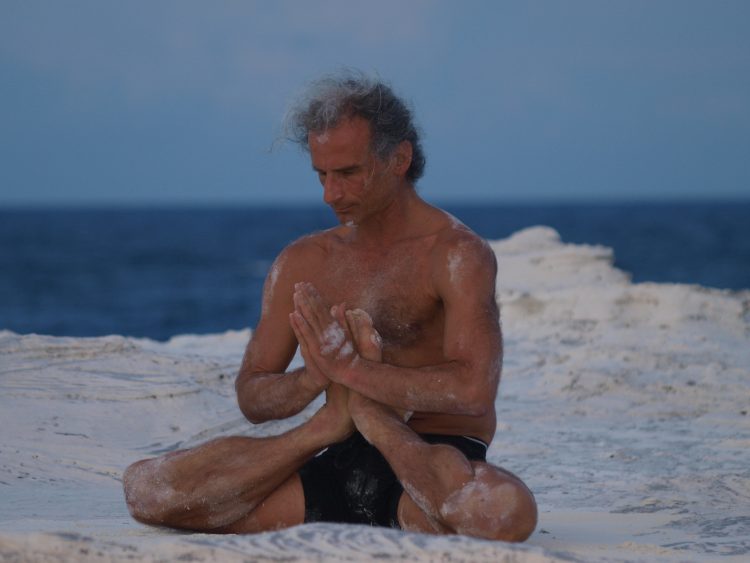In a world increasingly driven by urgency, performance, and overstimulation, wellness has become more than just the absence of disease—it’s now a daily pursuit of balance, vitality, and clarity. Yoga, once a spiritual discipline confined to the East, has gracefully crossed borders to become a global symbol of holistic health. Yet despite its popularity, many still see yoga merely as a form of exercise. To grasp its true potential, one must view yoga not as a workout, but as a work-in: a deeply integrated practice that nurtures both body and mind. From enhanced physical flexibility to profound emotional resilience, yoga offers a gateway to wellness that few other disciplines can rival.
The Physical Foundation: Strength, Flexibility, and Functionality
At first glance, yoga presents itself through movement. The fluid transitions between poses—or asanas—are often graceful, methodical, and deeply physical. Regular practice leads to increased flexibility, enhanced muscle tone, better posture, and stronger joints. It trains the practitioner in balance, core strength, and proprioception, helping the body become not just limber, but intelligent.
Unlike high-impact workouts that emphasize intensity and repetition, yoga prioritizes alignment, breath coordination, and mindful engagement. This leads to improved body mechanics and reduced injury risk—not just on the mat, but in everyday life. Over time, practitioners experience decreased back pain, reduced muscle tension, and even relief from chronic conditions such as arthritis or fibromyalgia.
Furthermore, yoga’s low-impact nature makes it accessible across age groups and fitness levels. It offers modifications for beginners and challenges for advanced students, all within the same framework. But its beauty lies not just in how it transforms the body, but how it builds a conscious relationship with it. Each movement becomes a conversation, each pose an act of self-awareness.
The Breath-Body Connection: Pranayama and the Nervous System
One of the most overlooked yet powerful aspects of yoga is the practice of pranayama—conscious breath regulation. Far from being a secondary component, breathwork lies at the heart of yogic philosophy. It acts as the bridge between body and mind, a lever through which we can influence our physiological and emotional state.
Scientific studies have confirmed what ancient yogis knew centuries ago: breathing patterns directly impact the autonomic nervous system. Slow, deep breathing activates the parasympathetic response—our rest-and-digest mode—reducing heart rate, lowering cortisol levels, and soothing the nervous system. In contrast, shallow or rapid breathing feeds the sympathetic system, the fight-or-flight response.
Through pranayama, yoga trains the practitioner to shift consciously between these states. Techniques like alternate nostril breathing, kapalabhati (breath of fire), and ujjayi (victorious breath) each offer specific benefits, from mental clarity to energy boosts. When breath awareness is paired with movement, it transforms the practice into a moving meditation—anchored, present, and grounded.
Mental Clarity and Emotional Equilibrium
The mental benefits of yoga are perhaps its most compelling yet least tangible feature. At a time when anxiety and depression rates continue to climb globally, yoga provides a reliable sanctuary for the mind. The physical poses engage the body, the breath calms the nervous system, and the meditative focus fosters emotional clarity.
Regular yoga practice has been shown to reduce symptoms of anxiety, improve sleep, and elevate mood. It enhances emotional regulation by activating regions in the brain responsible for introspection, compassion, and executive function. More than just a way to ‘relax,’ yoga offers tools to build mental resilience: the capacity to remain centered amid chaos, to pause before reacting, and to observe thoughts without judgment.
Meditation and mindfulness, which are often integrated into yoga sessions, further reinforce this mental strength. Whether it’s through a few minutes of stillness in savasana or a more extended seated meditation, these moments of conscious stillness allow for mental decluttering and emotional realignment.
The Spiritual Dimension: Beyond the Physical
While the physical and psychological benefits of yoga are profound, to stop there is to miss its spiritual essence. Yoga, at its core, is a philosophy—a way of life rooted in union. The word “yoga” comes from the Sanskrit root “yuj,” meaning “to yoke” or “to unite.” This refers not only to the union of body and breath, but to the integration of the self with a larger consciousness.
In the yogic tradition, wellness isn’t just about how well the body functions or how calm the mind is—it’s about living in harmony with the self, others, and the environment. Practices such as the yamas and niyamas (ethical guidelines), meditation, and chanting are all designed to foster this deeper awareness. For many, yoga becomes a spiritual path—one that encourages introspection, self-inquiry, and purpose-driven living.
That said, yoga does not require religious affiliation. Its spiritual benefits are available to anyone seeking depth and meaning in their personal journey. Whether you practice it in a studio, at home, or outdoors, the mat becomes a sacred space—a mirror that reflects both your strengths and your shadows.
Yoga and the Science of Stress Reduction
In today’s high-pressure society, stress is not just an emotional nuisance; it is a physiological condition with real health consequences. Chronic stress has been linked to everything from cardiovascular disease to weakened immunity and impaired cognition. Yoga’s effectiveness in managing stress is now well-documented by science.
The combination of physical movement, breath awareness, and meditative focus creates a unique relaxation response. This trifecta lowers blood pressure, improves heart rate variability, and reduces inflammatory markers in the body. In fact, yoga has been incorporated into various clinical interventions, from PTSD treatment to addiction recovery, precisely because of its capacity to modulate the stress response.
More than just temporary relief, yoga builds long-term coping capacity. By learning to breathe through discomfort in a pose, practitioners learn to sit with emotional discomfort in life. By cultivating focus on the mat, they develop mental discipline off the mat. This mind-body resilience is one of the reasons yoga continues to gain traction in modern wellness programs and therapeutic settings.

Cultivating Self-Awareness and Compassion
Yoga invites us to shift from achievement to awareness. In a culture obsessed with doing, yoga offers a space for being. There is no scoreboard, no competition—only presence. This shift fosters a profound sense of self-compassion. Rather than striving to perfect the pose, practitioners learn to accept where they are, moment to moment.
This non-judgmental awareness spills over into daily life, improving relationships and reducing negative self-talk. As the mind quiets and the breath deepens, we begin to relate to ourselves with kindness and curiosity instead of criticism. This emotional shift is healing not only for the self but for how we interact with others. Compassion becomes not just a concept, but a lived experience.
Integrating Yoga into Daily Life
You don’t need to attend an hour-long class to benefit from yoga. In fact, one of the most empowering aspects of the practice is its adaptability. A ten-minute morning stretch, five minutes of evening breathwork, or even mindful walking can be deeply therapeutic. The key is consistency and intention.
To start, create a sacred space—even a small corner—for your practice. Establish a regular time, whether it’s at dawn to energize your day or at dusk to release tension. Use guided videos, explore online platforms, or attend community classes to find a style that resonates—whether it’s vigorous vinyasa, calming yin, or spiritually rich kundalini.
Above all, approach yoga with openness. Let go of expectations. Some days your body may be stiff, or your mind restless. That’s part of the journey. Each practice is an opportunity to return to yourself—to reconnect, realign, and rejuvenate.
A Way Forward for Body and Mind
Yoga is not a cure-all, but it is a potent ally in the journey toward holistic wellness. In a fragmented world, it offers integration. In a noisy world, it offers silence. In a distracted world, it offers presence. Whether you come to the mat seeking strength, stillness, or something in between, yoga meets you where you are and gently nudges you forward.
By harmonizing movement and mindfulness, effort and ease, yoga invites us to reclaim our wholeness. It teaches that wellness is not just an external achievement but an internal state—a way of being that radiates from the inside out. When practiced with sincerity and regularity, yoga doesn’t just change your body; it changes your life.

















































